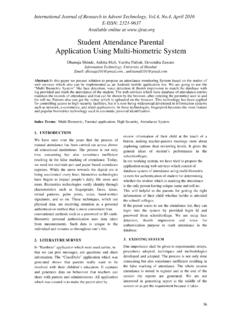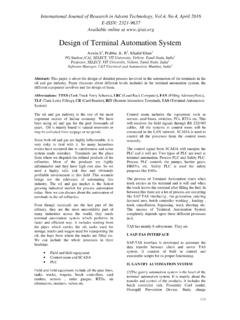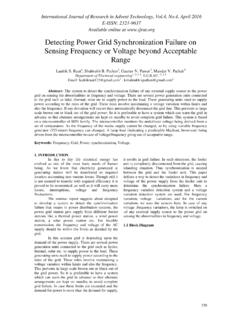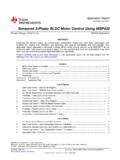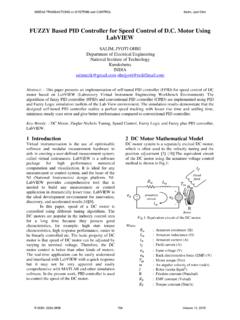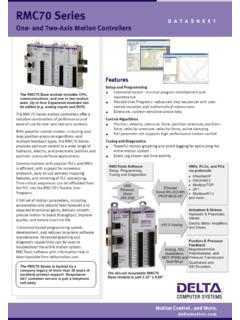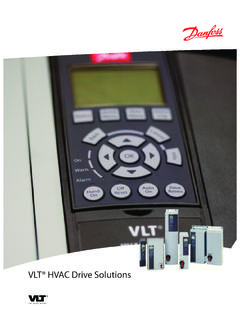Transcription of Speed Control of DC Motor Fed with Fuel Cell and …
1 International Journal of Research in Advent Technology, , , April 2016 E-ISSN: 2321-9637 Available online at 7 Speed Control of DC Motor Fed with Fuel Cell and Luo Converter Using PI and Fuzzy Controller , K. Srinivasa Rao2 , Sri Sivani College of Engineering Assoc. Professor, Sri Sivani College of Engineering Abstract- This paper proposes the stable and ripple free output voltage from the design of developed dc-dc converter topology. Dc voltage provided by battery contains high voltage ripples and it is not constant enough voltage, thus it is not applicable for most devices like electric-vehicle controller, dc-chargers, etc.
2 Dc-dc converters are employed to attenuate the ripples regardless of change in the load voltage. In the existing method, the classical buck converter for electric vehicle applications does not meet the load requirement containing more ripples on the output voltage and parasitic effects. To overcome this problem the advanced developed dc-dc luo-converter technology was introduced. Luo converter is the developed converter derived from the buck-boost converter. In this proposed model the additional filter elements in the luo-converter eliminate the output ripples and effectively enhance the output voltage level.
3 A computer simulation using matlab/simulink confirms the predicted Keywords: dc-dc converter, electric vehicle, low pass filter, luo converter 1. INTRODUCTION From the past few decades, the dc-dc conversion technology has been a major subject area in the field of power electronics and drives. Dc-dc converters application has increased widely especially in industrial applications and computer hardware circuits. The output voltage of pulse width modulation (PWM) based DC-DC converters can be changed by changing the duty cycle [1]-[2].
4 The conventional non-isolated dc-dc boosting converters are supposed to produce more output voltage ripples. For the purpose of ripple reduction traditional controllers are employed. The DC-DC luo converter can convert the source voltage into a higher output voltage with higher efficiency, high power density and simple structure [3]. Proportional Integral (PI) controller has been implemented for the proposed DC-DC converter. PI Control techniques offer stability, large line and load variation robustness, good dynamic response.
5 PI Control is chosen to ensure fast dynamic response for line side and load side disturbances with output voltage regulation [4]-[6]. However, these controllers are very sensitive to circuit parameter variations, change in operating region, line and load voltage disturbances. A fuzzy logic controller (FLC) and sliding mode controller (SMC) for the conventional DC-DC converters has been reported in [7-8]. However, the FLC for all the converters has produced small output voltage start-up overshoots, high overshoots during the dynamic conditions and high output ripple voltage compared to PI controller [9].
6 The FLC based PID controller for the buck DC-DC converter has been reported [10]. OF LUO CONVERTER: The circuit diagram of the Buck-Boost output Luo converter is shown in Fig. 1. In the circuit, S is the power switch and D is the freewheeling diode Fig 1: Luo converter . The energy storage passive elements are inductors. L1, L2 and capacitors C1, C2, R is the load resistance. To analyse the operation of the Luo converter, the circuit can be divided into two modes.
7 When the switch is ON, the inductor L1 is charged by the supply voltage E. At the same time, the inductor L2 absorbs the energy from source and the capacitor C1. The load is supplied by the capacitor C2. The equivalent circuit of Luo converter in mode 1 operation is shown in (a). During switch is in OFF state, and hence, the current is drawn from the source becomes zero, as shown in (b). Current iL1 flows through the freewheeling diode to charge the capacitor C1. Current iL2 flows through C2 R circuit and the freewheeling diode D to keep itself continuous.
8 If adding additional filter components like inductor and capacitor to reduce the harmonic levels of the output voltage International Journal of Research in Advent Technology, , , April 2016 E-ISSN: 2321-9637 Available online at 8 Fig 2: Luo converter with MOSFET ON condition For closed loop simulation we go for state space transfer function. During MOSFET-ON 10111 LVdtdIdtdILVinLLin= =+ .. (1) 2022222 LVdtdIdtdILVCLLC = =+.
9 (2) 1011111 CIdtdVdtdVCILCCL= =+ ..(3) 2220221222221 CICIRCVdtdVRVIdtdVCILLCCCLCL++ = =+ + .. (4) During MOSFET-OFF, Fig 3: Luo converter with MOSFET OFF condition 1011111 LVdtdIVdtdILCLCL= = .. (5) 2022222 LVdtdIVdtdILCLCL = =+ .. (6) 1011111 CIdtdVIdtdVCLCLC= = ..(7) 2022222 RCVdtdVRVdtdVCCCCC = =+.
10 (8) Now, by writing into state space equations MOSFET-ON Where, MOSFET-OFF Where, []inCCLLCCLLVLVVIICRCCCLdtdVdtdVdtdIdtdI + = 0001121021210001121000000021212121 =210212100011210000000 CRCCCLAa =00011 LBa = 2121212121000000112100001100 CCLLLCCLLVVIICRCLLdtdVdtdVdtdIdtdI =21000000112100001100 CRCLLAbInternational Journal of Research in Advent Technology, , , April 2016 E-ISSN.
